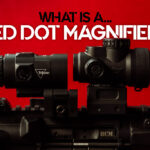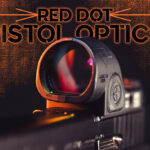
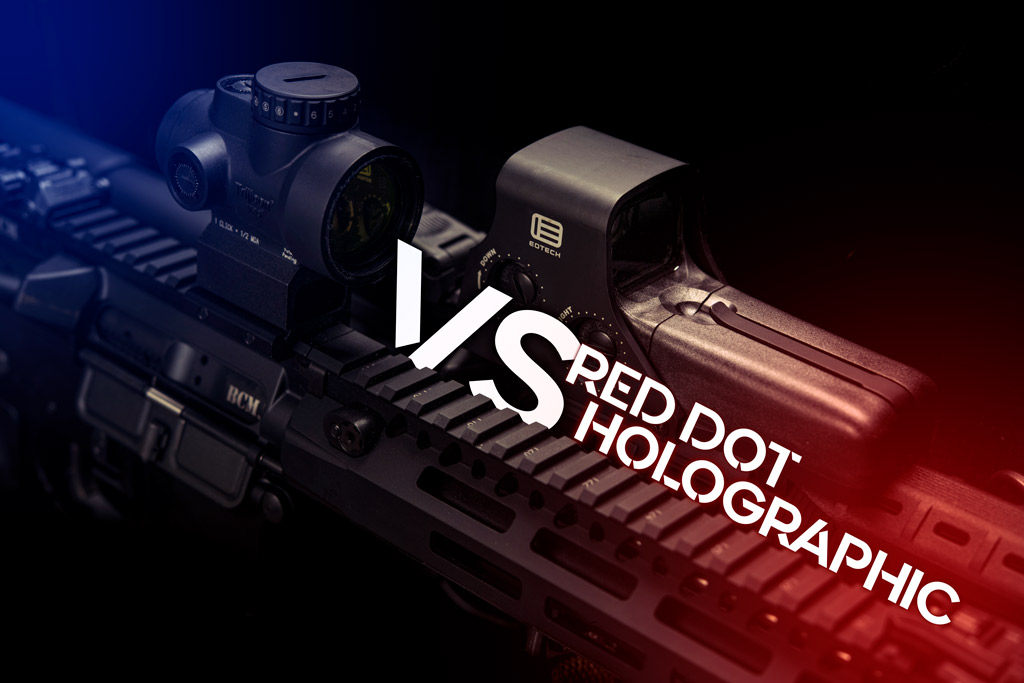
Red dot VS holographic sight comparisons remain commonplace discussions at the gun range. Truth be told, both are solid options for new shooters. They’re easy to use, priced right and the quality is there, but deciding which option suits your shooting needs can be difficult. Here’s a quick look at the advantages and drawbacks to weigh before making a purchase.
We’ll start with a short explanation of the basic designs to illuminate why one may be better for your purposes than the other. Both traditionally use battery power to make the point of aim visible to the shooter when looking through the optic. The dot, or reticle in these devices is all internal. No light is projected downrange when they are in use like a laser system.
Holographic Sights
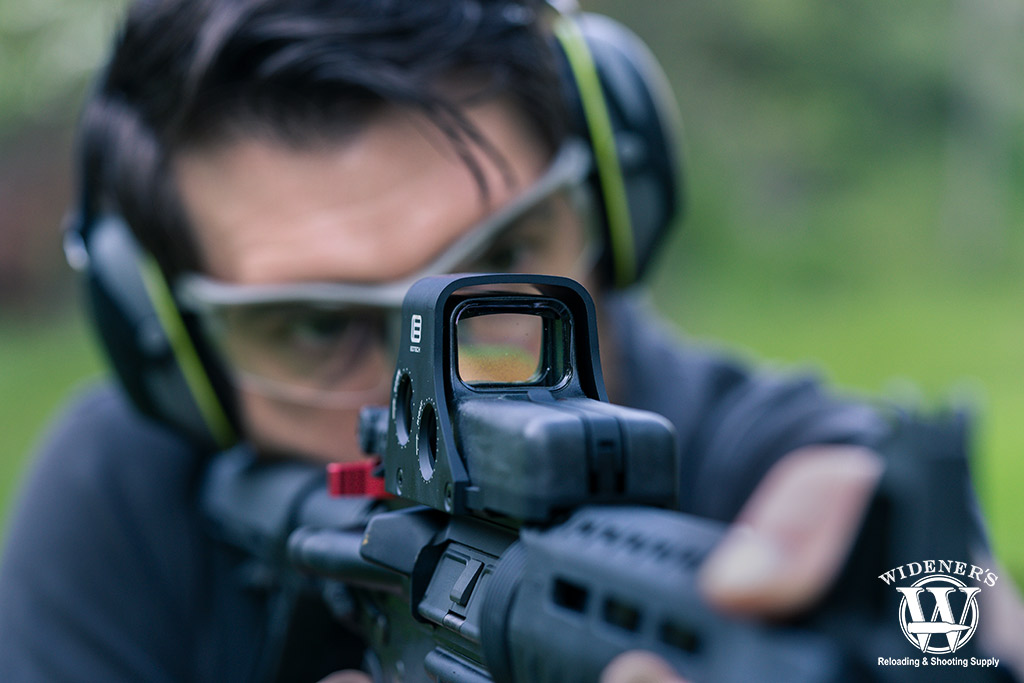
Holographic sights use a laser to illuminate a 3-D image as if it’s being projected downrange to the viewer.
Star Wars fans were in awe at the holograms depicted in the film series, but it took Eotech to bring the technology to the firing line. Bushnell introduced it to consumers at the Shooting, Hunting, and Outdoor Trade Show in 1996 as the HOLOSight. However, the Eotech design remains the most popular, filling many LEO and military contracts over the years.
Holographic sights are still popular, particularly among turkey hunters and shotgunners eager to connect on those fast clays. They continue to sell to this day and several other companies have introduced their own versions with a variety of reticle options and features.
Holographic sights use a laser to illuminate a three-dimensional image. The laser then appears in the field of view and serves as the optic’s reticle (aiming point).
The path that a thin beam of light travels internally is not quite as straight as the road taken in a red-dot optic. It bounces around internally, strikes a holographic grate that illuminates, and the now-glowing pattern shows—when looking through the sight—as if being projected downrange. It’s a great heads-up display and something worth experiencing, even if you don’t buy one.
The projected approach means that, unlike red-dot optics, there is no need for lens coatings capable of reflecting red light back to the shooter. As a result, holographic sights seem to have almost crystal-clear glass, allowing more light to pass through to the shooter—a duly-noted advantage by most who’ve gotten behind one.
Rectangular bodies are the norm for holographic sight design. They are usually longer and more enclosed than reflex red dots. That design, of course, provides added protection and more room for features like weather sealing.
Red-Dot Sights
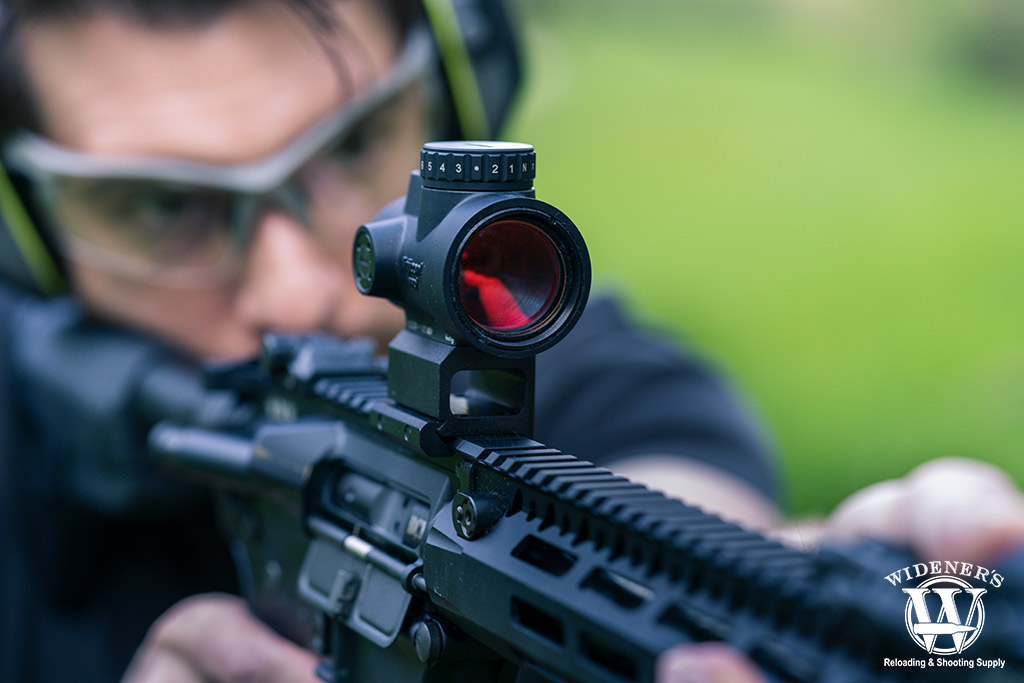
Red dot sights rely on an LED for illumination, using coated lenses to reflect the dot back to the viewer.
Both tube and reflex-style red-dot sights rely on a red LED hidden somewhere behind the front (objective) lens to generate the aiming point. As previously mentioned, reflecting that light back to the shooter requires coatings on the glass, which reduces the amount of ambient light that successfully passes through.
Reflex-style red dots are lightweight, roughly rectangular shaped, and provide a wider field of view—a decided psychological advantage while learning to shoot with both eyes open. That virtue is also common to holographic sights. In addition, Joe Fruechtel, Director of Development in SIG Sauer’s Electro-Optics Division states; “Reflex sights tend to be more open, which allow users to get behind them quicker.”
Tube-style red-dots aren’t quite as fast for target engagement, but their combat-proven performance is one reason they’re extremely popular. Aimpoint’s CompM4 was the first red-dot optic adopted by the U.S. military. The totally tubular red-dot optic has a history of thriving through some of the most rigorous conditions on the planet. That armored shell is tough and long-lasting. “They are more durable.” Freuchtel summarized, discussing the rugged design.
Red Dot VS Holographic Considerations
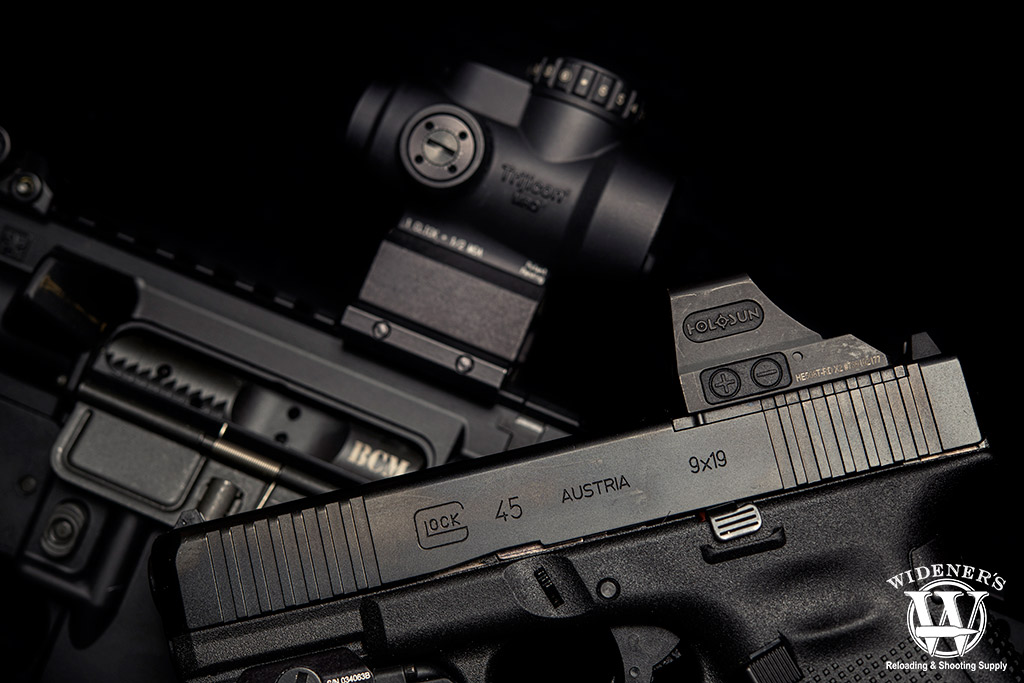
There are several considerations including weight, size, and light transmission for mounted weapon optics.
If you’re a pistol owner looking for an optic, bear in mind you will be adding mass to your slide. Too much weight can affect cycling and reliability. For that reason, the lightweight reflex-style red dot sight will be your best option. Be sure to test your pistol with the self-defense ammo you plan to use with your optic attached to make sure it cycles reliably.
Revolver owners who want to tame a hunting hand cannon, on the other hand, may appreciate the recoil-mitigating added weight of a tube-style red dot. Mounting options are more limited with revolvers, so be sure to research options before purchasing.
For those low-light sportsmen who require their optics to collect every photon possible, consider a holographic. The coatings on a red dot block some light, although not a lot. Even a little can make a difference, though, when you hunt early and stay late. You can also find holographic options with a projected dot as small as 1 MOA, which makes acquiring targets at a distance easier.
If knocks, bumps, and bruises are an unavoidable part of your shooting routine—whether on the range or in transit—tubular red-dots and holographic sights more likely to survive. The trade-off is they tend to weigh more than their reflex-style sibling.
Zoom In, Enhance?
Whether you go with a red dot or holographic, there is traditionally no magnification. That can make precision at distance a challenge. The solution is mounting a flip-up magnifier behind the optic, but with a holographic sight, the reticle remains the same size. The real estate occupied by a red dot’s reticle doubles with a 2x magnifier, and in many cases, it can swell enough to obscure the bullseye or entire target.
Holographics offer a wider selection of reticle shapes and patterns compared to red dots, although that’s quickly changing. “Holographics used to be the only way to get a 65 MOA circle dot reticle as well as bright reticles,” says Freuchtel. “That isn’t the case anymore.” There is a price to pay for the diversity, however. These modern designs drain batteries significantly faster than simple red-dot units.
Optic Buying Guide
Lens size plays a factor in how fast you can engage a target. A wider field of view makes target acquisition and identification easier. Discussing optics with larger glass upfront (objective lenses), Freuchtel states, “It means your eye can be further off from center and still see the dot or reticle.” Designs like these are more forgiving to the shooter, allowing for eye relief and accuracy simultaneously.
Make sure the optic you’re considering purchasing has a field of view that works for your purposes. Also, look for intuitive and easy-to-work brightness controls and on-off switches. Fumbling around with stiff dials, or mushy buttons is the last thing you want to be doing while trying to make a shot. Be sure to check the estimated battery life and see if replacement batteries are hard to find.
Some units collect solar power and trickle it back into the batteries. For an average shooter, it’s not a decided advantage, but if you’re heading on safari for a month it’s something to consider. Automatic on-and-off circuitry is a welcome bonus. It’s often referred to as “shake-awake” technology.
Make sure the reticle/dot brightness is adjustable and check how large of an MOA it is. A fine dot is great for precision work, but if home-defense is foremost on your mind, think wide. A large dot or reticle is easy to put on target when under stress.
Red Dot VS Holographic: Common Applications
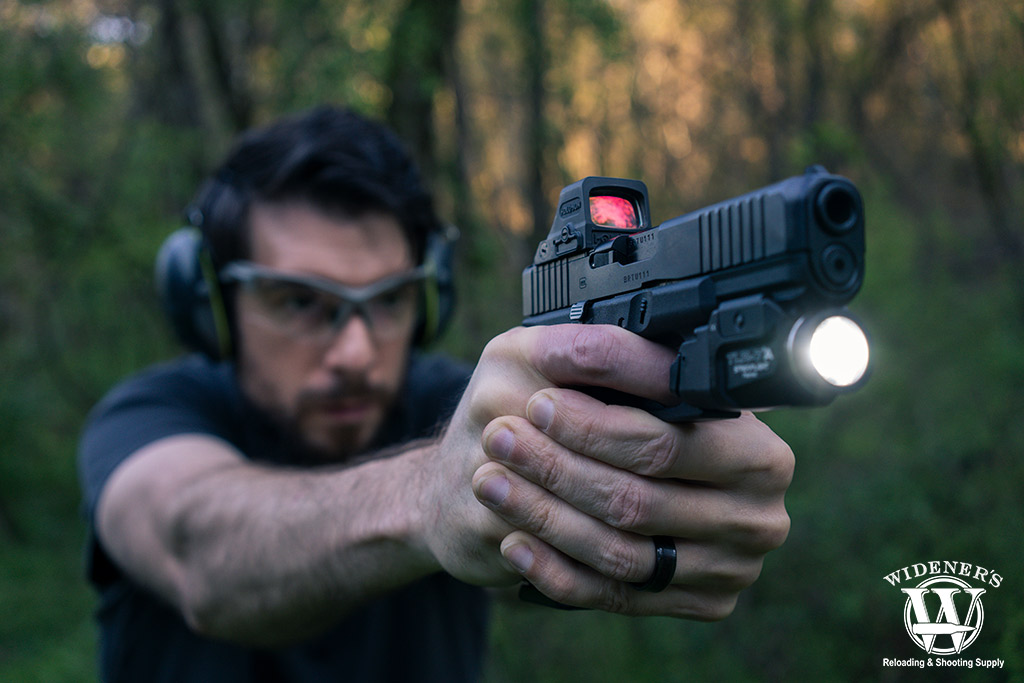
The light-weight reflex style red dot optic is more popular with pistol and carbine owners.
Self Defense Options
- For a self-defense pistol, or for competition use, reflex red dot sights are the most popular choice. Their wide field of view increases situational awareness. They also add less weight to a moving slide, decreasing the risk that the increased mass will produce chronic stoppages. A reflex sight’s slender profile also doesn’t show through (print on) clothing as much, either. If you carry concealed, that’s a critical consideration.
- The choice for those riding on home-defense shotguns and rifles depends largely on personal preference. There’s no denying criminals move fast once they discover their intended victim has a gun. For that reason, reflex models hold a slight advantage. The winning edge goes to any unit that automatically turns on (usually as you pick up or move the gun). The reflex sight allows enough light to pass through to properly engage the target, assuming you aren’t in the dark. Simple is always better in a life-threatening situation.
Hunting Options
- Most hunting handguns are revolvers and their operation doesn’t require a slide’s movement to operate. For that reason, coupled with the ruggedness, most red dots that head out on opening day are tube style.
- Hunting rifles almost always opt for tube style because they’re better at surviving the elements. Adding a flip-up magnifier behind the optic makes medium-to-long-distance shots easier.
- Dove hunters also may appreciate a reflex for that open view, but when it comes to pursuing turkeys or deer with slug guns, sportsmen usually opt for a more ruggedly built tube.
Competition Options
- Competition rifles often have a backup reflex red dot on the side rail at an angle (so-called offset). This allows the shooter to turn the gun and hit targets up close—fast. When twisted back to the upright position, competitors can engage steel at long distances using a high-powered riflescope mounted on top. Tube styles are common in the position, but reflex models are also common. Either can ride on the top Picatinny rail, with or without a magnifier. Consult the NSSF organization’s regulations before buying. Optics are not always allowed and sometimes banned in certain divisions.
- For competition shotguns, the wide-open space of a reflex makes it easier to see those fast-flying clays moving into and out of the optic. If it’s an action sport you’re pursuing, though, a ruggedized tube model is often a better choice.
Optically Speaking
The features and performance packed into today’s red dot VS holographic sights grow longer every day. Armed with this basic information, hopefully, you can narrow your search before you buy. And, it’s always good to closely inspect the warranty before making a purchase. Many manufacturers stand behind these product warranties for years. Spending a few more dollars now may save you time and money down the line.


